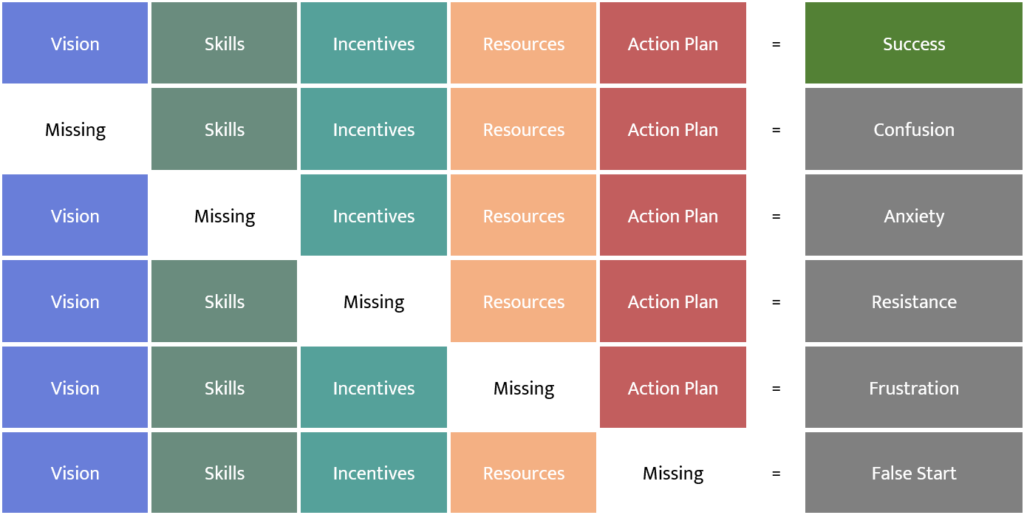Imagine you’ve spent considerable effort cleaning up your data, only to find it back in disarray a few years later. Happened to you before? You’re not alone.
This is a symptom of what is called ‘Process entropy’; the nature of process and order to devolve into chaos over time. Whilst it can feel inevitable, it’s certainly not, but it does take ongoing effort and vigilance. That said, like most things, the right setup upfront can minimise the amount of effort required.
The key to preventing process entropy is ongoing vigilance, and in this blog post, we’ll discuss the importance of resources, training, and checks to keep your data organised and your processes efficient.
In particular, we’ll cover:
What vigilance looks like
If life is like a box of chocolates because you never know what you’re going to get, then managing data in your business is like a Rubik’s Cube, the last turn is easy but when it’s a mess it’s really hard.
Imagine again, you’ve taken the time to solve a Rubik’s Cube, and you’re really glad it’s solved. But, someone comes along and fiddles with it once or twice each day. If you keep on top of it, it only takes a moment to correct. If you ignore it, it quickly becomes a major project to bring it back into alignment.

How would you keep it nice, clean, and solved? You might tell everyone around to keep it that way, which will work if they remember and new people don’t come around. You could put up a sign, so long as people take the time to read the sign. You might set aside a minute every day to check it. You might do all of the above.
These are all examples of the kinds of vigilance you need to keep your processes in check in respect of your data.
Resources: Tools for success
Dr. Timothy Knoster’s Model for Managing Complex Change emphasises the importance of resources in successful change implementation.
In the context of combating process entropy, resources such as checklists and guides can be invaluable in helping your team maintain consistency and adhere to best practices.

Having these resources may be time-consuming to create, but getting it the resources in place in the first instance mitigates the need for you to spend time cleaning up data again at a later stage, and you have more reliability throughout.
Training: A strong foundation
An investment in knowledge pays the best interest.
Benjamin Franklin
Even with the right resources available at someone’s fingertips, if your team aren’t aware of the resources available there’s no point having them.
Onboarding training
Providing comprehensive onboarding training for new employees is crucial to ensuring they have a strong foundation in your firm’s processes and best practices.
Any processes you need team members to know need to be documented and new team members (or existing team members learning a new skill), must be made aware of them.
Team meetings are a key moment in your day-to-day work that can highlight if this is an issue. When an outcome is reached and everyone there just needs to remember what the change in process will be, that’s a problem. An email to all affected staff might be a little better, but it still falls well short.
Protip: One of our favourite tips in this space is to have your best and most detail-oriented resource ensure that your top category (or even top five in a pinch) of client files are absolutely perfect. These are often the most complex files, and the most deserving, so they present a great ‘best practice example’ group that any team member can refer to when in doubt of the ‘right way’.
Just-in-time training
Just-in-time training borrows from the Toyota Just-In-Time method from their production system.
It acknowledges that no amount of resources or training can cover every element, reminder, or checklist item at every step in a complex process.
A powerful tool to manage this is the right training and resources at the right time. A simple analogue version of this would be a short instruction that sits next to the phone in reception or a sign on the fridge about office kitchen rules. They provide team members with instructions in the context of when they need them.
In a digital context, it can be:
- A detailed description at each Task in a Thread or Workflow, ideally linking to a MS SharePoint page or similar for further detail.
- Notification email templates that also include training, tips, or common faults.
- A standard Windows Folder template structure that gets copied, and includes a basic .txt or .doc file with detail of how the folder should be laid out.
Not only will this reduce process entropy, but also help your team to know what to do efficiently without having to guess or hunt around.
Checks: Ensuring accountability
Implementing checks to monitor your processes can help identify and address issues before they escalate.
This can include automated checks, pre-checks, and audits.
Just-in-time monitoring
When data becomes inaccurate, it’s usually due to human error. This can be as simple as a typo (we’ve seen Fee Disclosure Statements scheduled for both the year 202 and the year 2202), or a new staff member not being aware of all the places to check when a certain change takes place. At these points, we’re using the far more effective carrot as opposed to a stick, to manage change and data integrity.
Just as with training, just-in-time correction is a valuable functionality most financial advisers have never accessed before. For our Xplan using readers, we manage these with a fully automated just-in-time approach using Xplan Alerts which can notify the user responsible for file maintenance the day after an error is made (long before any human is likely to have noticed).
A somewhat more manual approach to this can be achieved with any platform with Microsoft Excel or PowerBI based reporting, which can still practically and efficiently identify issues on a weekly or monthly basis, long before something can go wrong. This process is effective, but can still feel more like a ‘stick’ since there’s more visibility (usually by management) in the reporting.
Just-in-time pre-checks
Whilst there’s nothing quite as good as automated contemporaneous checking, checking the data just before it’s going to get used is also far more efficient than waiting until a problem or gap in the data arises.
In financial advice, this most easily happens at the pre-review stage. This can be done by a junior or offshore team member by tasking them to check a file prior to the review process commencing.
By ensuring checks are completed effectively by an admin resource before the review process starts, it means that we don’t need to wait until a more expensive resource (such as an adviser or paraplanner) identifies (or worse still, doesn’t identify) an error.
Again, for our Xplan using readers, we use a Data Validation report to automate and scale up the number of checks a user can perform in a small space of time.
Audits
A very simple, old-fashioned, and effective approach can be a simple audit process. In financial advice we can often associate the word audit with a sense of dread, where even the most compliant practice might shudder at the time and attention lost.
That said, a simple audit process can be very effective. Any process by which a sample of a whole is selected, either randomly or by a risk-based approach, can function as an audit.
Peer reviews can seem like a time sink if all instances of work are peer-reviewed, however conducting one peer (or manager-subordinate) review per week can easily pay itself back in time, and can teach both the audting and the audited something new.
Simple examples include:
- CSO’s reviewing another’s fact find entry each week
- Paraplanner’s reviewing another’s SoA each week
- Adviser’s reviewing a file note of another adviser each week
Instructions should include providing feedback to the peer, and if either is unsure how to best achieve an outcome where opinions differ, raise them with management for clarification and documentation.
The exact same approach can be taken on a manager-subordinate basis, ideally with a lower frequency to avoid a sense of micromanagement.
You can use whichever frequency you like, but having a process for this can easily enhance team learning and build consistency within your business.
Consider this the equivalent of having a security camera and a team of office wardens all dedicated to protecting your now very precious Rubik’s Cube.
Conclusion
Maintaining order in your firm’s data and processes is indeed much like keeping a Rubik’s Cube solved.
It requires ongoing vigilance, the right resources, continuous training, and a system of checks and balances.
By implementing these strategies, you can keep process entropy at bay and ensure your firm remains organised and efficient over time. And remember, just like solving a Rubik’s Cube, practice makes perfect!
How we can help solve data management in your business
Want to have a chat about how we can help you tame process entropy in your business? Book a chat with us today.

Leave a Reply